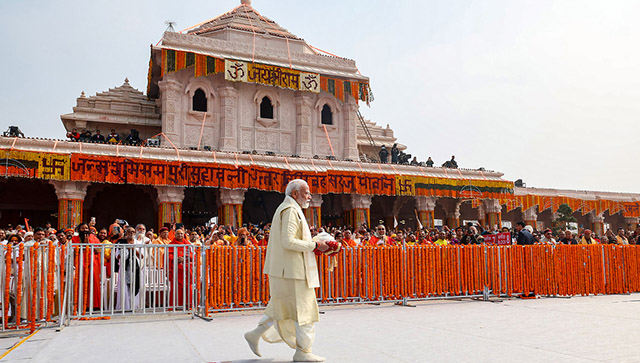When you hear the word yoga, the image of a person sitting on a mat with limbs stretched out is most likely to be conjured up in your head. Today, yoga is associated more with physical rigour and exercise, with a lesser focus on the mental aspects and benefits. It is practised in a increasingly stylised manner, with the added involvement of aspects ranging from goats to beer and even marijuana! But it began as a philosophy aimed to unite the soul with universal energy and free it from the material world it occupies.
It is considered one of the six schools of philosophy in Hindu thought. While it is widely accepted that the roots of yoga can be traced to ancient Indian history, the exact origins remain a debate. The word yoga itself has more than one meaning, however, most critics agree that it is derived from the word yuj, to combine or unite. It signifies the union of the individual with universal consciousness.
Some historians argue that yoga was first practiced during the Indus Valley civilisation, based on the pose depicted on the Pashupati seal, but this claim is not widely accepted. Yoga finds a mention in the Rig Veda, one of the four main Vedic texts. The Keśin hymn 10.136 of the Rig Veda contains the earliest mention, writes Karel Werner.
It is the Upanishads where yoga is written about in the manner that we know it today. Yoga is also a section in the Arthasastra, where it is written about along with the Carvaka and Samkhya philosophies.
With respect to the _Bhagavda Git_a , the term is used in many contexts, such as yoga is skill in action and expression and equanimity in the mind is a sign of yoga. A more fleshed out explanation is provided in the Mahabharata, where the essence of yoga lies in the unity of the individual atman or soul with the universal Brahman.
Scholar Patanjali provided a definition for yoga, and his brand of this philosophy is called Raja yoga. The definition, yogaś citta-vṛtti-nirodhaḥ, is translated to Yoga is the inhibition (nirodhaḥ) of the modifications (vṛtti) of the mind (citta) by IK Taimni and Yoga is restraining the mind-stuff (Citta) from taking various forms (Vrittis) by Swami Vivekananda. It is said that he built on the metaphysical foundations of Samkhya, and systemised his learnings into the yoga sutras, which are divided into four chapters and contain 195 statements.
These four chapters are called Samadhi Pada, where he describes yoga and the means to achieve samadhi; Sadhana Pada, where he talks about the Kriya and Ashtang types of yoga; Vibhuti Pada, where the supernatural powers which can be attained through yoga and warning against temptation is described; and Kaivalya Pada, which speaks about moksha.
Patanjali divided yoga into eight limbs , also known as Ashtang yoga: Yama (social ethics), Niyama (personal ethics), Asana (postures), Pranayama (life force), Pratyahara (turning the senses inwards), Dharana (one-pointed focus), Dhyana (meditation), and Samadhi (merging with the self).
Vajrayana or Tantric Buddhism includes the practice of yoga which advocates physical and mental discipline, with a focus on the latter. The Shaiva and Vaishnava bhakti traditions combine devotion with aspects of the yoga sutras, such as practical meditative exercises.
Within itself, yoga contains different philosophies, such as Gyan yoga, Karma yoga, Bhakti Yoga and Hatha yoga. Of these, Hatha yoga is the most popular, which emerged from Tantra. From the mid-19th century onward, this philosophy was advocated by Swami Vivekananda and other influential teachers, as well as the Theosophical society, who had a major influence on how yoga spread in the US.


)




)
)
)
)
)
)
)
)